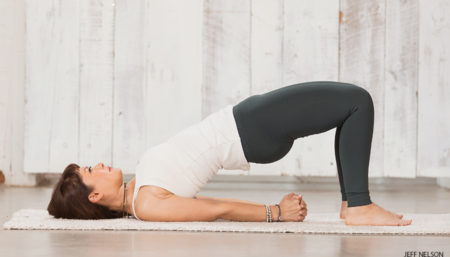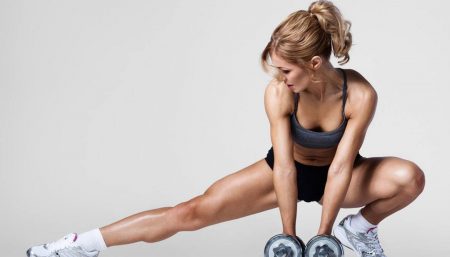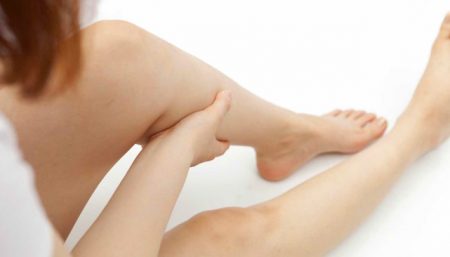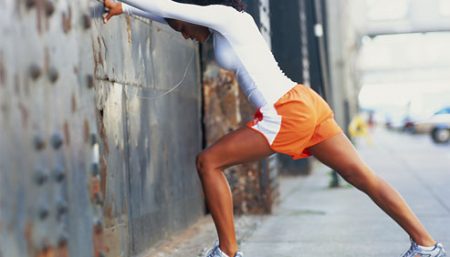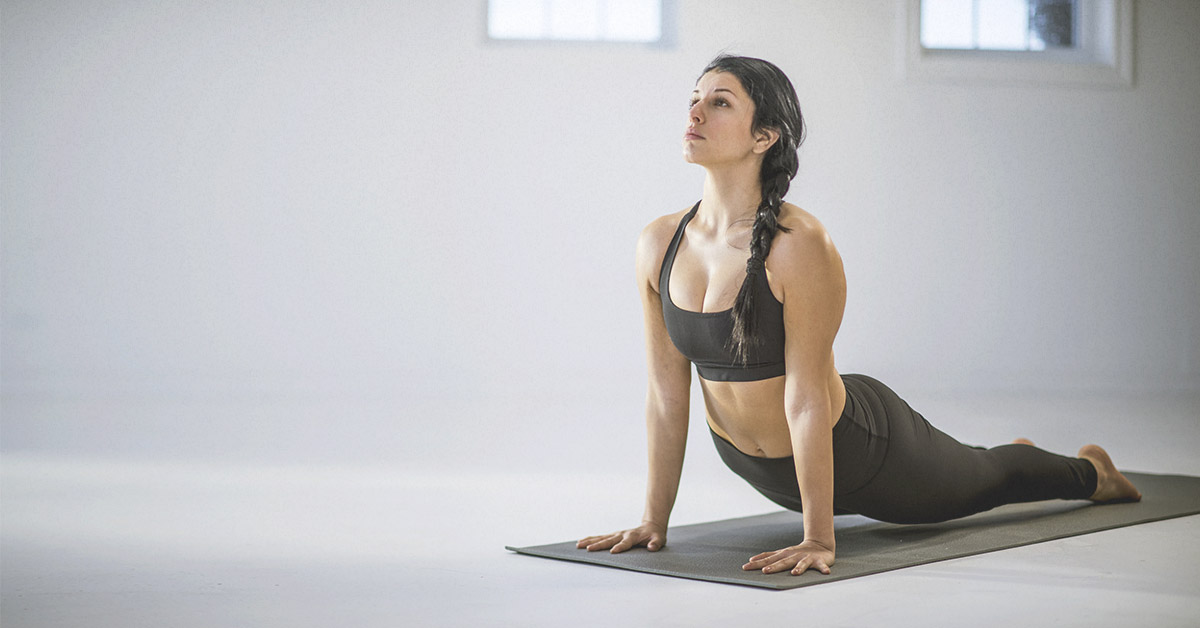
The calf is made up of two muscles on the back of your lower leg:
- The gastrocnemius is the larger calf muscle. It forms the visible bulge beneath the skin.
- The soleus is a smaller, flat muscle that lies underneath the gastrocnemius muscle.
Both heads of the gastrocnemius merge together about halfway down the calf and form the calcaneal tendon (the Achilles tendon). The soleus is the smaller calf muscle that lies underneath the gastrocnemius and attaches to the tibia and the fibula. Towards the bottom of the calf, the soleus merges with the gastrocnemius and thus becomes the Achilles tendon.
These 5 yoga poses for tight calves will help to release your calf muscle tension and reverse the shortening.
Walk Your Dog
- Begin on your hands and knees in a table top position. Spread your fingers wide, press into your hands and tuck your toes. Lift your hips in the air and make a v shape with your body to bring yourself into a Downward Facing Dog.
- Bend your right knee, keeping your left leg straight and pressing your left heel down. Hold for 10 seconds to feel the left calf stretch and then straighten your right leg out as you bend your left knee. Press down through the right heel for 10 seconds. Continue âwalking your dogâ out by peddling your feet one at a time for 10 repetitions.
Tip: If your shoulders get tired, lower down to your knees to rest and then go back to the Downward Dog position to complete your repetitions.
Squat (Malasana)
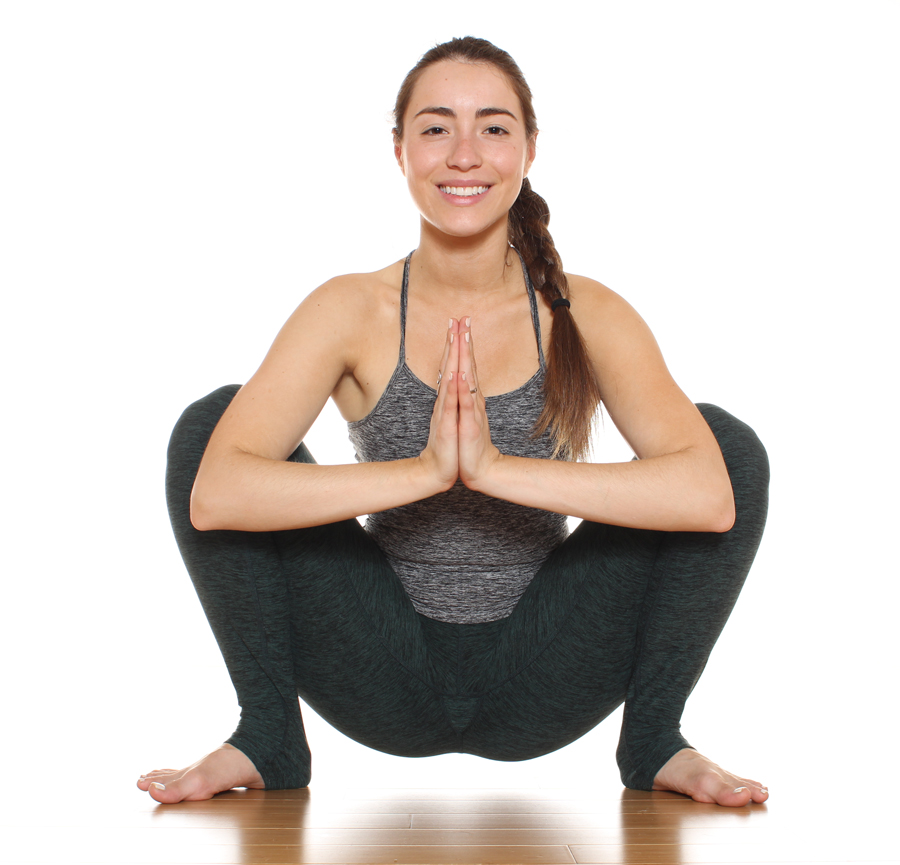
- Roll up to mountain pose and pause for a few breaths.
- Stand with your feet slightly wider than hip width apart. Bend your knees and lower your hips towards the floor into a squat. Bring your arms to the inside of your legs pressing out on the elbows against the insides of the knees. Bring your hands into prayer position. Relax your shoulders and lengthen your spine up. If this is quite intense, you can rest your heels on a rolled up towel.
- Slowly straighten your legs coming into standing forward bend to release your hips.
Standing Forward Bend (Uttanasana)
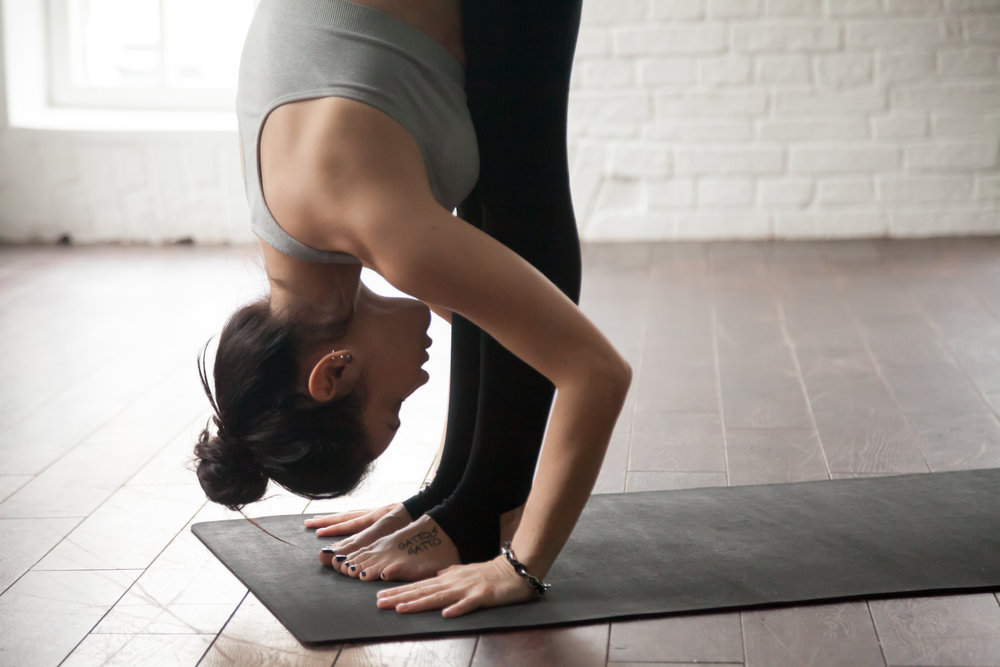
To begin with get into Downward Dog pose, & then begin to walk your hands back towards your toes to come into standing forward bend. Allow your torso to hang over your legs.
For a deeper stretch, stand with the balls of your feet on a rolled sticky mat or towel and your heels on the floor. Slowly walk your hands away from your feet until you feel a good stretch.
Pyramid Pose (Parsvottonasana)
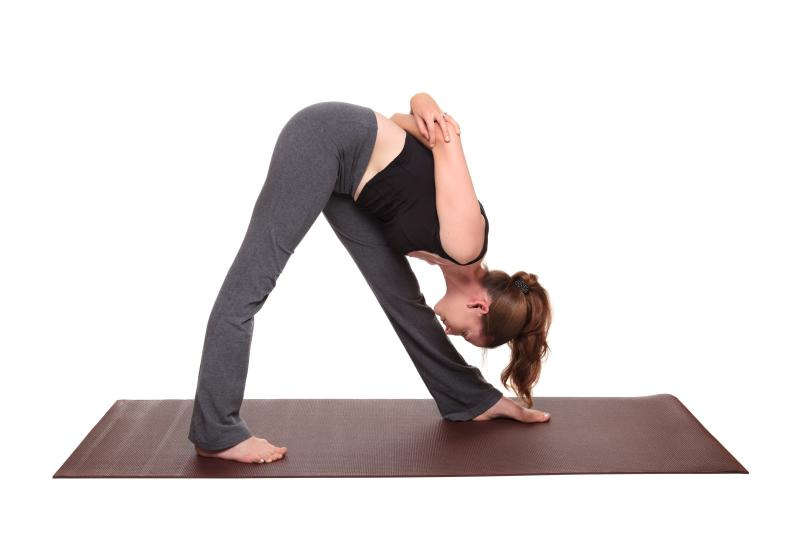
- From downward facing dog, bring your right foot forward to the inside of your right hand.
- Come up to your fingertips. Step your left foot forward about a foot. Turn your left toes out slightly and lower your left heel so that the sole of your foot is flat on the mat. Straighten your right leg & lift your torso to a standing position.
- Put both hands on your hips to make sure that your hip points are facing towards the front of the mat. Inhale to lengthen the spine.
- On the next exhale, deepen your right hip crease as you come into a forward bend over your right leg. Keep a flat back as your lower. When you come to your full extension, it’s ok to let the spine around a bit. Lower your hands to the floor. Stay on your fingertips or flatten your palms to the floor.
- On each inhale, lengthen the spine. You can even come up to a flat back on the inhales. On each exhale, take the forward bend a little deeper. Keep drawing the right hip back to keep your hips squared. Microbend your right knee so it’s not locked. Stay for around five breaths.
- To keep the body in balance, repeat on the left side.
Child’S Pose (Balasana)
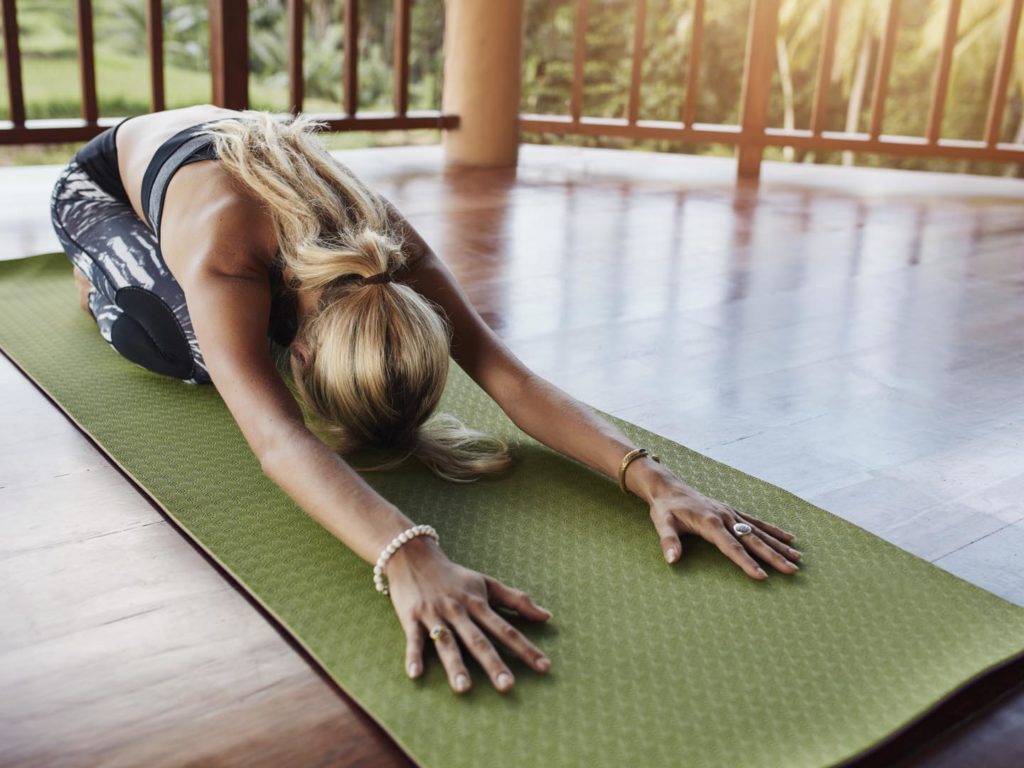
- Get down on all fours, open your knees and feet equally (as much as you need to) as you push back toward the heels and drop the belly and chest toward the floor. (If the knees and feet are not equally open, the stretch becomes a hip opener more than a back stretch.)
- To modify, place your hands under the head, creating a pillow so the head does not feel itâs sinking into the floor.
While performing these poses focus on the muscles of your calves for maximum benefit.
Disclaimer
The Content is not intended to be a substitute for professional medical advice, diagnosis, or treatment. Always seek the advice of your physician or other qualified health provider with any questions you may have regarding a medical condition.
